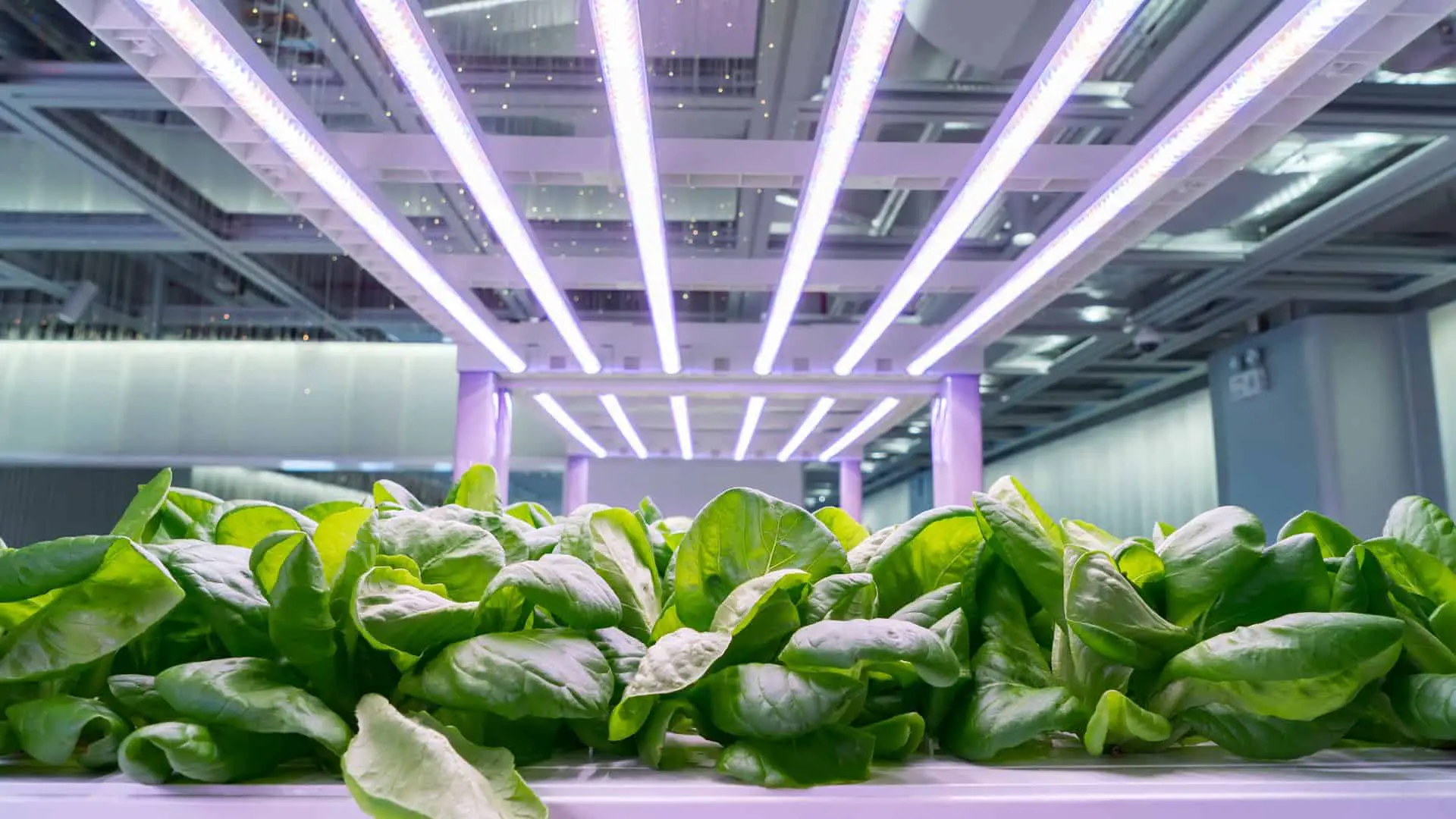HumbleBee Farms’ Hydroponic Container Garden
Hydroponic farming is a soilless agricultural practice that uses mineral nutrient solutions in an aqueous solvent to grow plants. This method has gained immense popularity for its efficiency and sustainability, particularly in urban settings where space is limited.
Hydroponic systems, such as those offered by companies like Gardyn, Lettuce Grow, and Click and Grow, allow for cultivating various plants, including vegetables, herbs, and fruits, in controlled indoor environments.
Inside the HumbleBee Farms Container
HumbleBee Farms, located in Lyons Falls, operates out of a standard shipping container.
Inside, it’s a world of hydroponic innovation, where thousands of green vegetables grow on movable frames in a controlled environment.
The interior, starkly contrasting its exterior, features raw stainless steel and is filled with the soft sounds of classical music, which owner Kristin Cunningham believes enhances plant growth and flavor.
This isn’t just farming; it’s a symphony of growth and technology.
Can Classical Music Enhance Plant Growth?
Yes. Kristin Cunningham, the visionary behind HumbleBee, swears by the power of classical music in boosting plant growth and flavor.
Studies have shown that plants respond positively to music, especially classical and high-frequency tones.
The farm’s co-founder, Brandon Cunningham, notes that their vegetables grow about five days quicker than average, attributing this to the farm’s meticulous attention and ambient music.
Studies have shown that plants grown in hydroponic systems develop 30-50% faster than those grown in soil.
This accelerated growth rate is attributed to the controlled environment and direct nutrient access.
This unique approach underscores the Cunninghams’ commitment to nurturing their plants, reflecting their belief that personal energy and attention play a critical role in the quality of the produce.
How Does Hydroponic Farming Compare to Traditional Soil Farming in Growth Rates?
In terms of time, hydroponic systems have a much faster seed-to-harvest cycle, often taking only a few weeks.
In contrast, traditional soil farming can take months, depending on the type of crop and growing conditions.
This speed makes hydroponic farming ideal for providing fresh produce in urban areas with limited access to locally-grown food.
Efficient Use of Space and Resources
Humble Bee’s hydroponic system, purchased from Freight Farms in Massachusetts, can grow 11,000 plants simultaneously, equivalent to a traditional 3-acre farm.
Remarkably, it only consumes 190 kilowatt-hours of energy per day and uses about 5 gallons of water weekly, showcasing its efficiency.
In general, the efficiency of hydroponic farming is highlighted by its significant water savings, with systems using 80-90% less water than traditional soil gardening.
Furthermore, hydroponic systems can yield 100-250% more produce than soil-based farming, making them an attractive option for maximizing agricultural output in limited spaces.
Freshness and Quality: A Contrast to Industrial Farms
Compared to industrial farms, HumbleBee Farms’ produce, harvested and sold locally on the same day, offers significantly fresher produce.
Nutritional Benefits and Pesticide-Free Farming
Research from institutions like NASA and Cornell University has indicated that the nutritional value of crops grown in controlled environment agriculture (CEA), like that of HumbleBee farms, which includes hydroponics, can be as good as or even superior to field-grown crops, often retains more nutritional value compared to long-transported vegetables.
One study found that indoor-grown kale can be as nutritious or more so than field-grown, possibly due to the influence of LED lighting on certain nutrients like carotenoids.
Ultimately, the controlled environment of hydroponic farms allows for pesticide-free farming, a significant health benefit.
Community Impact and Expansion
Kristin Cunningham emphasizes the importance of providing accessible, healthy food year-round, viewing it as a right rather than a luxury.
Within just seven months of its opening, HumbleBee Farms is already fulfilling about 20 orders weekly and plans to expand its distribution.
With the rise of intelligent indoor gardens, consumers are increasingly gravitating towards hydroponically grown produce.
The convenience and year-round availability of fresh produce and the absence of agricultural chemicals make hydroponic systems an attractive option for health-conscious consumers.
These systems, now more accessible to the general public, enable individuals to grow fresh greens and vegetables in their homes, contributing to a shift in consumer preferences towards locally sourced and sustainably grown food.
Conclusion
HumbleBee Farms represents a significant step forward in agricultural practices, demonstrating how innovative hydroponic techniques can lead to more efficient, sustainable, and health-friendly food production.
The farm challenges traditional views of agriculture and serves as a testament to the potential of small-scale, local farming in meeting the growing demands for fresh, quality produce.
Thank you for reading!


